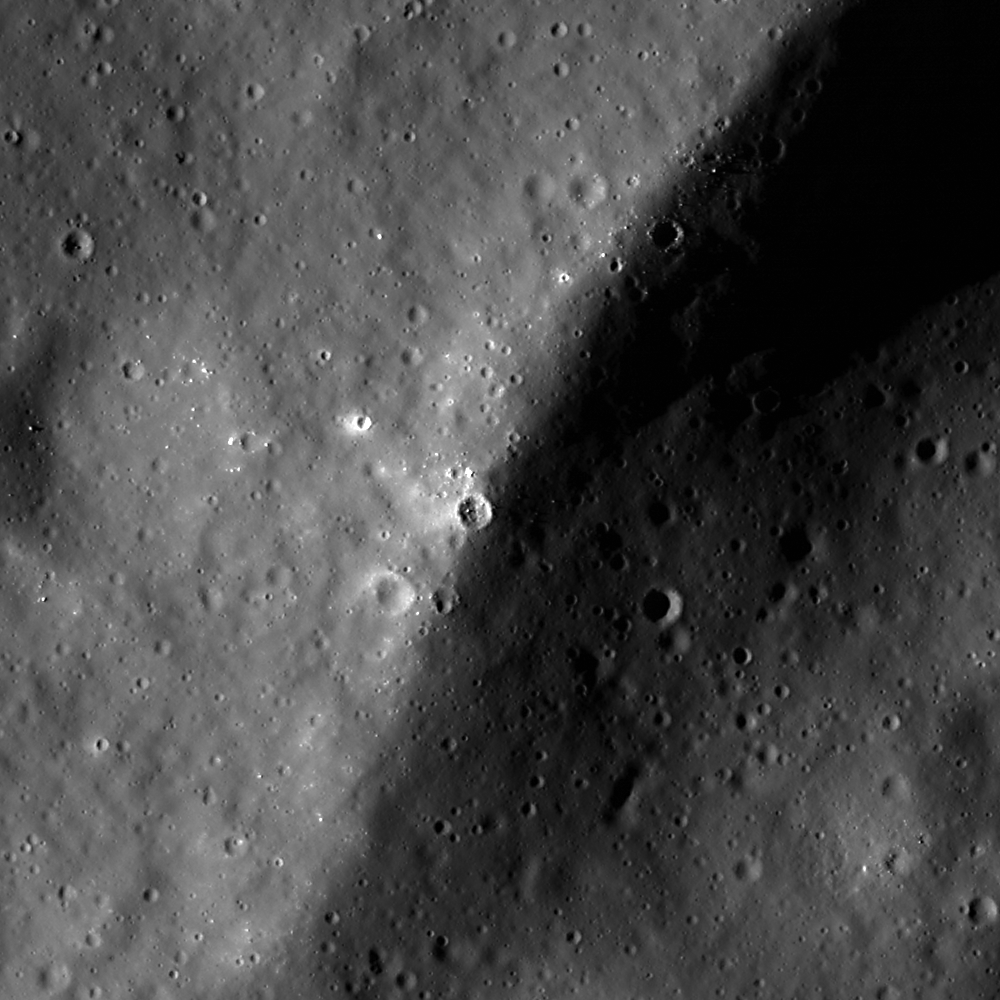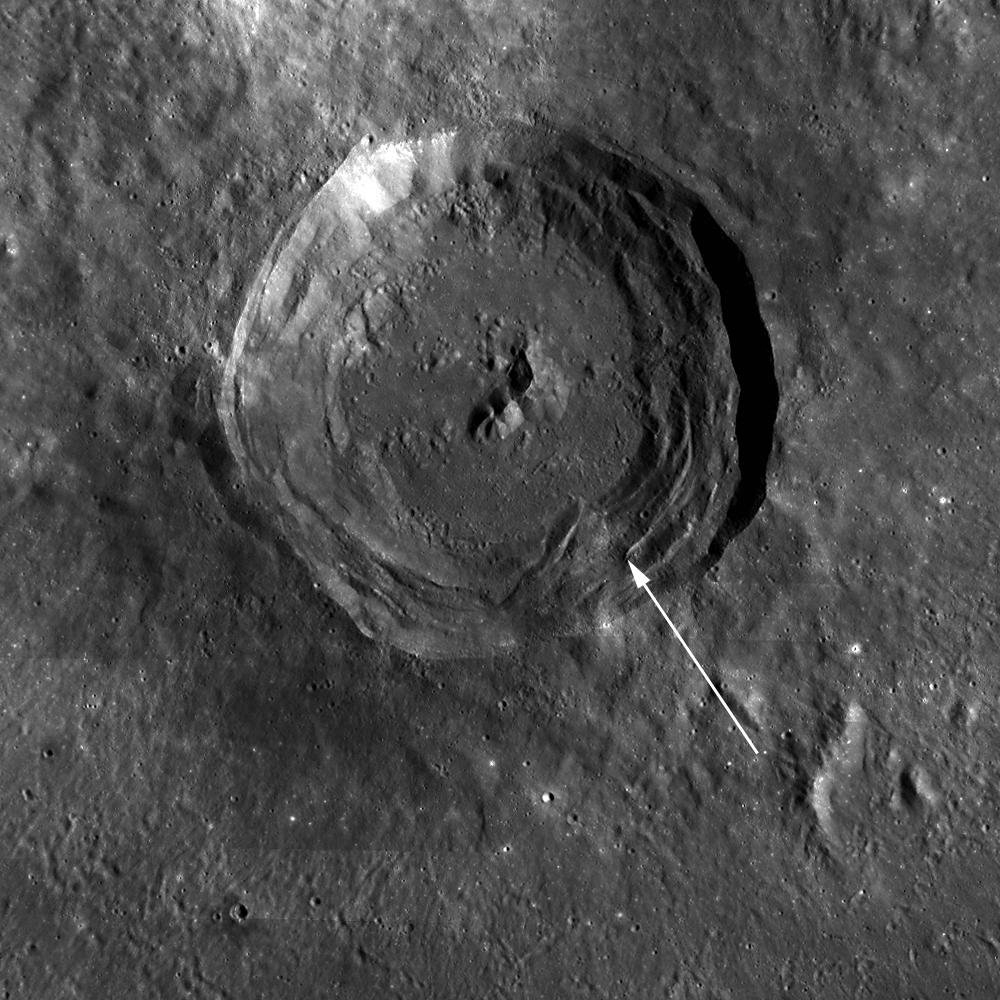
Crater terraces are a common occurrence in many craters on the Moon, and along with central peaks and flat floors, terraces are a geomorphic requirement for a crater to be labeled as complex. These forms are key to distinguishing between simple craters and complex craters. But how do these distinctive terraces form?
During the excavation stage of crater formation, complex craters experience uplift of the central portion of the crater. This results in one of the most distinctive features of complex craters, their central peaks. But while the uplift creates a central peak, it also causes collapse of the crater rim. This collapse occurs along faults that form as large blocks of rock start to slump inward, increasing the final diameter of the crater. Amazingly, most of this process is finished minutes after the impact!
Can you find more terraces in the full NAC frame?
Related Posts: Necho's Terraces, Slumping Rim of Darwin C, Terraced Wall of Buerg Crater
Published by Drew Enns on 13 September 2011
